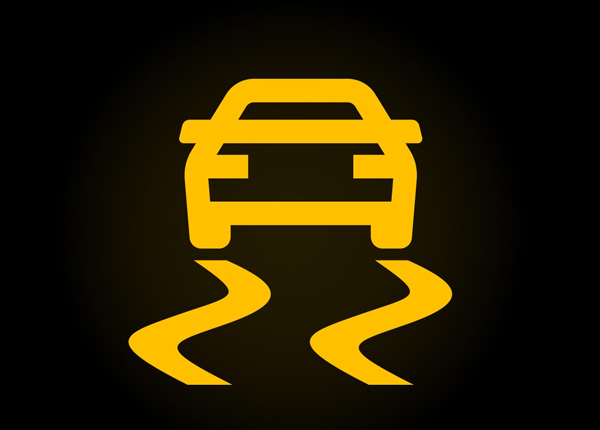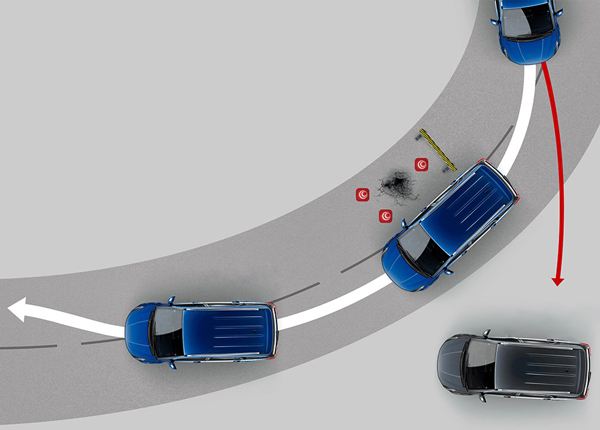
Friction: The Driving Force Behind the Brakes in Your Car
Updated Dec. 25, 2020Earlier in this section, we learned that friction is a resisting force that exists between any two contacting surfaces when one or both seek to move against each other. Therefore, wherever there are moving parts within your vehicle, friction plays a part in the way they operate.
Friction can sometimes be detrimental to the condition and function of your vehicle. As two vehicle components move against each other, friction can cause wear which will eventually lead to mechanical malfunctions. Your car’s engine must be lubricated to reduce friction between moving parts, to allow the whole system to continue running smoothly.
On the other hand, some of your vehicle’s essential systems rely on friction to work. The best example of this is the brakes. Without friction, your brakes would not be able to resist the movement of the wheels and stop your car. Let’s delve a little deeper into this idea.
How do brakes work?
Visualize yourself sitting in front of a bicycle that is elevated from the ground, so that the wheels are free to turn. If you were to spin one of the bike’s wheels, it would turn for a while before gradually slowing down and stopping once its kinetic energy is lost. If you were to spin the wheel several times in quick succession, it would spin at a faster speed and continue moving for longer. This is basically how your car accelerates when you apply pressure to the gas pedal. If you are on a flat stretch of road, your car will eventually roll to a stop if you leave the accelerator alone. Of course, most of the time while driving you will need to stop sooner than simply taking your foot off the gas allows. This is where your brakes come in!
Let’s go back to the spinning bike wheel analogy for a moment. If you were to reach out and press your flat palm against the moving wheel, the friction between your skin and the tire would slow its movement and bring it to a stop faster. You would probably notice a slight burning sensation on the palm of your hand as the rubber of the tire slides against it. This is basically what happens when you apply the brakes while driving.
When you push down on the brake pedal in your car, the brakes will press against the moving wheels to create friction, which will slow down and stop them. The brakes will absorb the kinetic energy from the wheels as your car begins to slow, converting it into thermal (heat) energy. In our example, this is why your skin felt warm as you pressed your palm against the spinning bike wheel.
In addition to the friction between the wheels and the brakes, the friction between the wheels and the road’s surface will bring your vehicle to a stop. However, your car may not stop if the brakes overheat and cannot absorb any more kinetic energy from the wheels. This can happen if you are traveling at too high a speed, or if you apply the brakes too suddenly.
Friction wear on brake systems
While friction is necessary for your brakes to function, too much friction can damage both your brakes and your clutch. Sticking to proper braking techniques should avoid excessive wear which could lead to a malfunction. To protect your brakes:
- Do not ride the brakes (avoid keeping the brake pedal partially depressed)
- Do not drive with the clutch partially engaged
- When driving downhill, shift into a lower gear to slow your vehicle without putting strain on the brakes
Friction can cause wear and damage in other areas of your vehicle. Components such as bearings and internal engine parts must be kept lubricated in accordance with the manufacturer’s guidelines, to allow them to move freely without overheating or becoming worn.
Loss of friction and skids
If you are braking in a situation where the friction between your wheels and the road is less than that between wheels and the brakes, your vehicle may end up skidding. This often happens on slippery road surfaces (e.g. ice or water) or when the vehicle in question is traveling at too high a speed. If there is not enough friction between the wheels and the pavement, the brakes may stop your wheels before the car’s kinetic energy has been fully absorbed. Essentially, it will continue to move across the surface of the road, even though the wheels have stopped turning.
Skidding is a very dangerous and frightening experience, as you will have no control over your speed and very little control over your path of travel when it occurs. For as long as the wheels remain locked, braking and steering will be largely ineffective. Skidding can also cause serious damage to your tires, as they are dragged across the surface of the road.
Skidding can be avoided if you take care to brake carefully, especially when traveling at speed or on a slippery stretch of road. Braking gradually will give your brakes more time to absorb the vehicle’s kinetic energy, while maintaining control of your course and speed.
Antilock braking system (ABS)
Many newer vehicles are built with an antilock braking system (ABS). Antilock brakes reduce the likelihood of a skid occurring, by automating the braking process for you. A driver can apply firm, sudden pressure to antilock brakes without causing wheel lock, as the system manages the pressure which is applied to the wheel electronically. Antilock brakes will continually grasp and release the wheel, preventing wheel lock while slowing the vehicle gradually. Regular brakes will grasp the wheel in a single motion and hold it for the entire time your foot is pressed down on the brake pedal. If your car does not have antilock brakes and you begin to skid, take your foot off the brake pedal until you can feel that the wheels unlock, reapplying pressure gradually to slow down to your desired speed.




